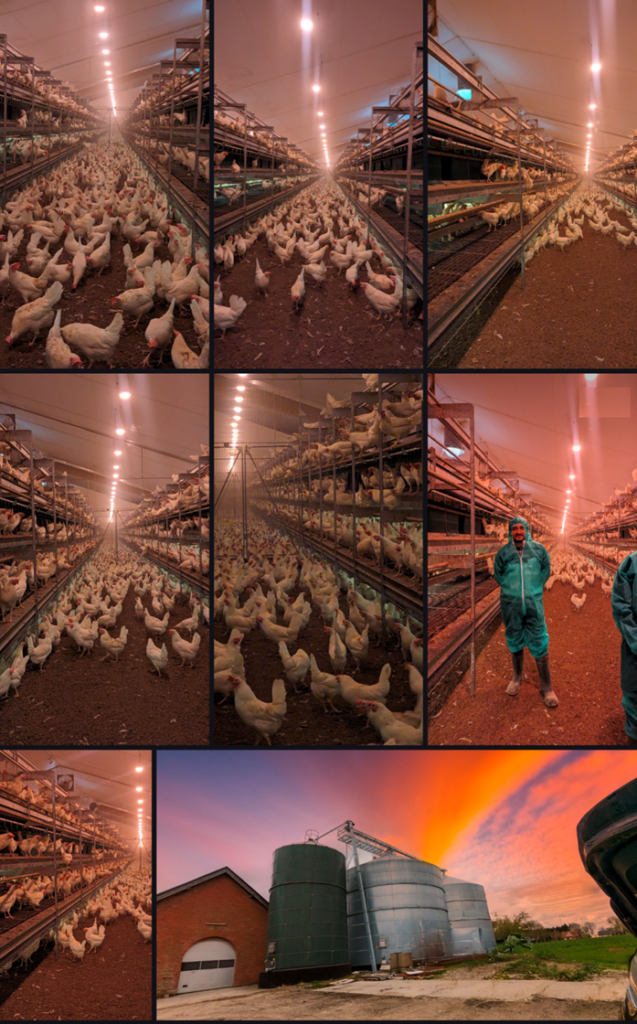ESR7 Secondment blog
I recently spent two weeks at the DLG Group in Fredericia, Denmark, the largest farm supply company in Europe and one of the top 5 feed producers. This secondment offered a comprehensive view of the commercial feed production, with a strong emphasis on sustainability.

Throughout my stay, I had the opportunity to interact with various teams, starting with the nutrition team focused on optimizing feed formulations. Their work involves constant updates on ingredient pricing and nutritional content, ensuring that feed formulations meet required standards while keeping costs down. Quality control measures are rigorous, involving regular testing of raw materials and finished products for contaminants and compliance with regulatory standards. I also explored the challenges faced by the team dedicated to organic feed, who develop formulations that meet organic standards despite limited ingredient options and approved additives.

During this visit, I had the opportunity to observe the operation of the feed mill and their quality assurance systems. The company uses robots to automate feed and ingredient composition testing with NIR technology. This information is connected to systems used by the quality assurance and feed optimization teams, which monitor the nutritional quality of the raw materials and the compound feeds produced by DLG. They also monitor feed structure and particle size, collecting samples for further evaluation of nutritional and sanitary quality. This complements rapid on-site evaluations with comprehensive external assessments. Additionally, DLG has a system in place that allows full traceability of the compound feeds produced and analyzed. This provides valuable insights for teams monitoring quality, feed optimization, and animal performance.


Following the visit to the feed manufacturing plant we made a small exercise to see the impact of different feed structure on the physical and organoleptic characteristics of the feeds which greatly influences the gut health of the animals. Here we further discussed the impact of different raw material on feed structure and the used of feed technology to improve feed quality.
My visit included insights into the organic market, understanding the complexities of trading organic commodities, and exploring potential raw material sources from Colombia and the USA. I observed the pig feeding team’s strategies for creating balanced diets tailored to different growth stages of pigs, monitored animal performance, and visited a feed manufacturing plant and an egg production operation with the poultry team. Discussions on the latest advancements in feed additivesProducts used in animal nutrition to achieve an effect on the feed itself, on the animals, on food p…, aimed at improving animal health and productivity, were particularly enlightening. I learned about DLG’s approach to integrating new products through thorough research and testing. Additionally, the sales team emphasized the importance of understanding customer needs, providing technical support, and building long-term relationships.
DLG’s commitment to sustainability is evident in their initiatives to reduce emissions by 50% by 2030 and achieve climate neutrality by 2050. They are involved in renewable energy projects and the development of alternative protein sources like insect protein. Exploring the capabilities of business intelligence platforms like Power-BI, which aid in decision-making and rapid action on key performance indicators, was another highlight.
Through this experience, I gained valuable insights into feed optimization, quality control, organic feed production, animal nutrition, additive research, and sustainable agricultural practices. It was an invaluable opportunity that helped me connect scientific concepts with their practical applications.

An example of one of the feed technology products developed by DLG. Xp2 is a technology used for increasing feed structure and digestibility based on an expander concept combining an optimized setting of pressure, temperature and humidity. The technology provides important advantages for intestinal health in comparison with conventional pelleting or mash diets in all stages of production.

Pictures from visit to egg farm receiving feed and nutritional and health advice by DLG. The farm had in house blending of grains plus a core nutritional mix provided by DLG. The in-house grain blending system allows for rapid correction of ratios between grains which might be useful when requiring rapid adjustment of feed formulation in response to a health challenge.

